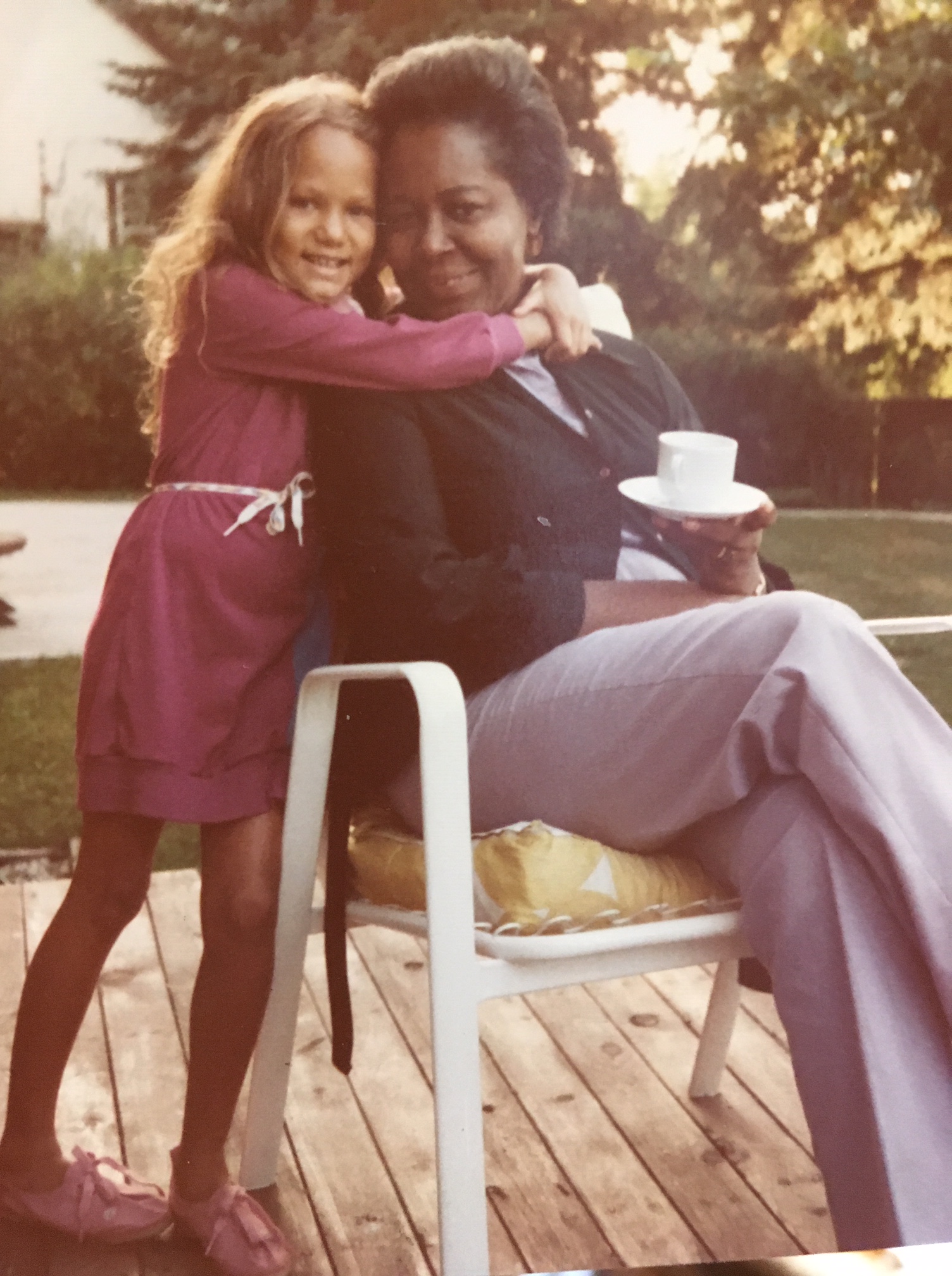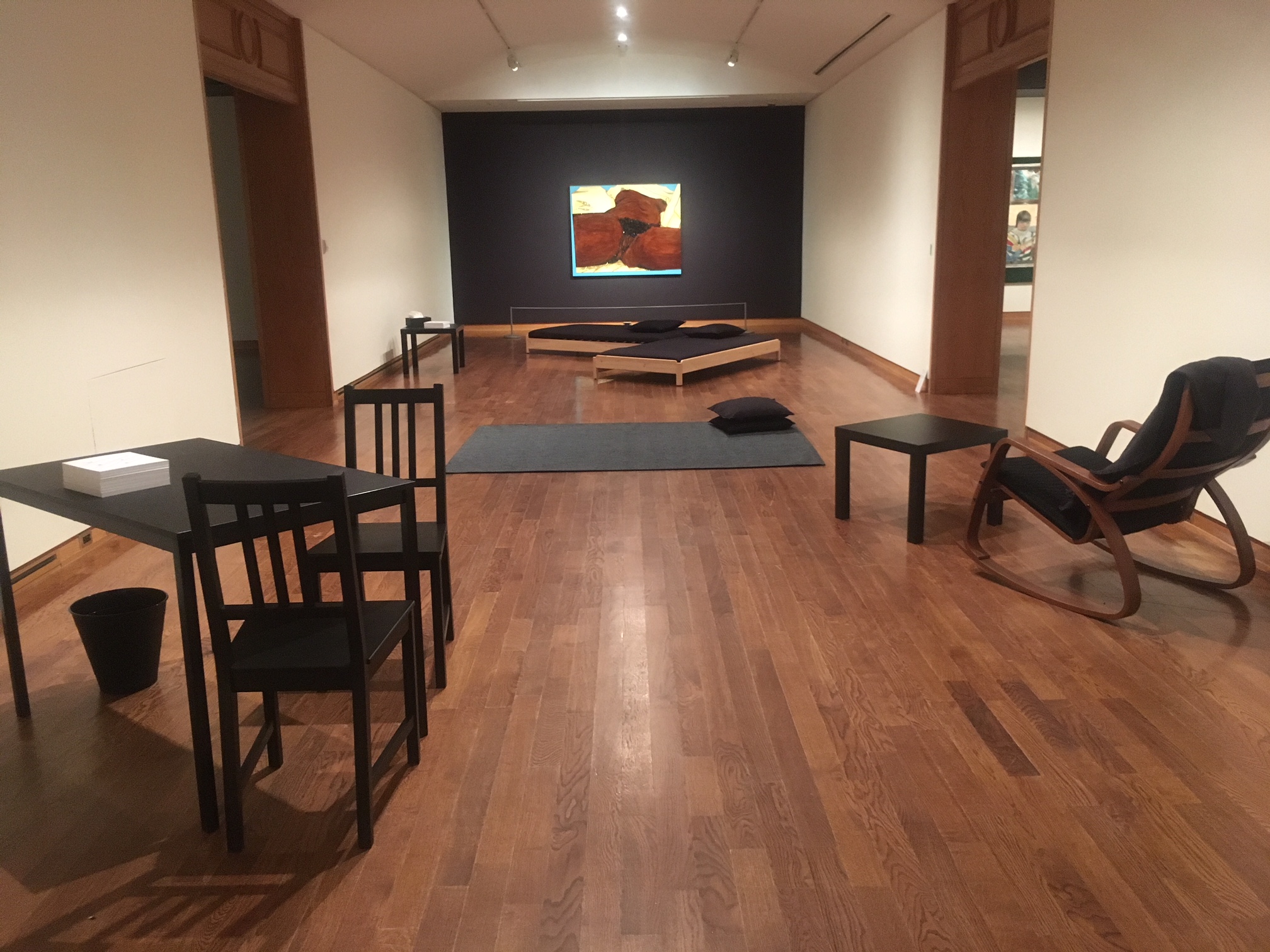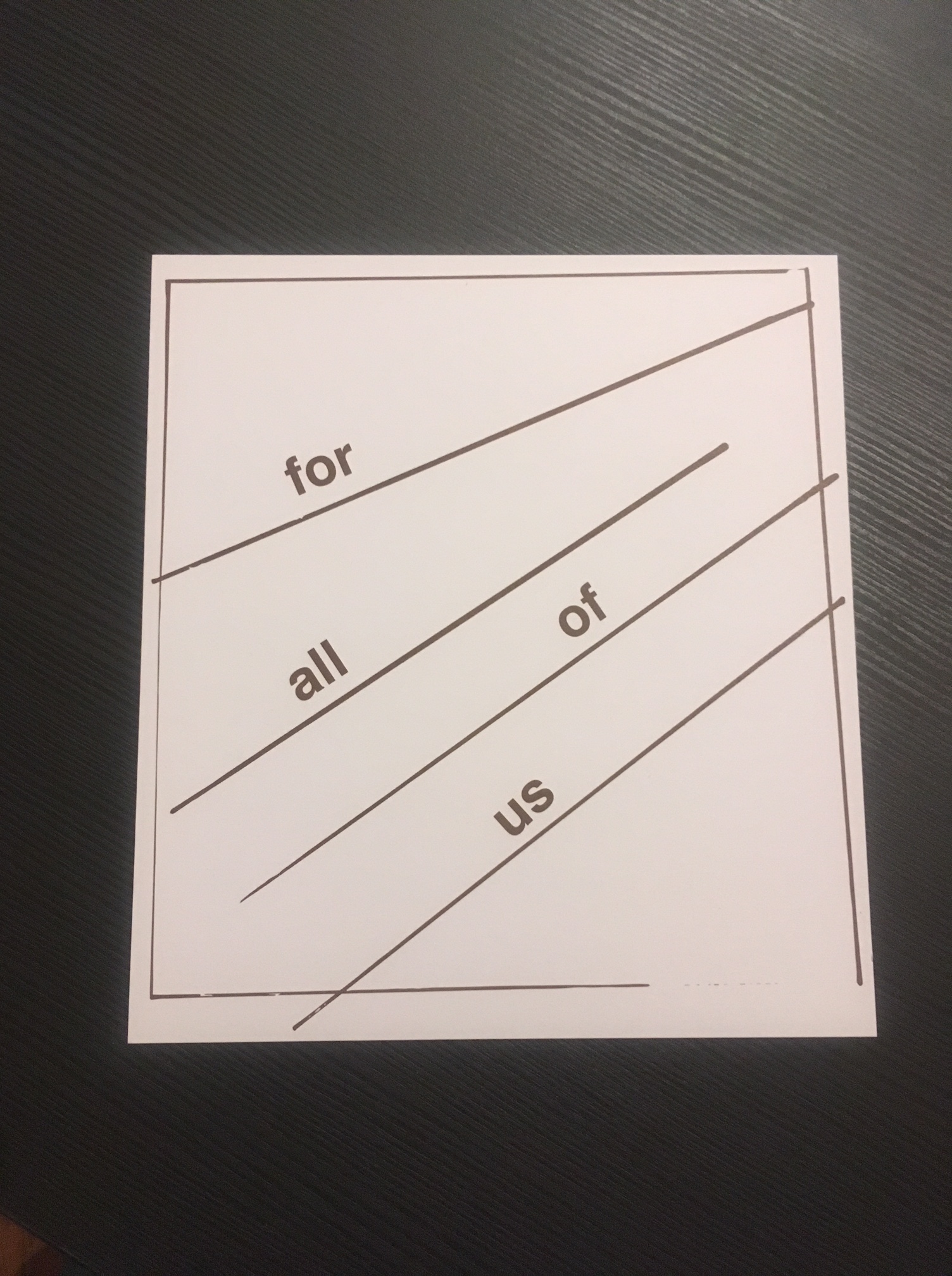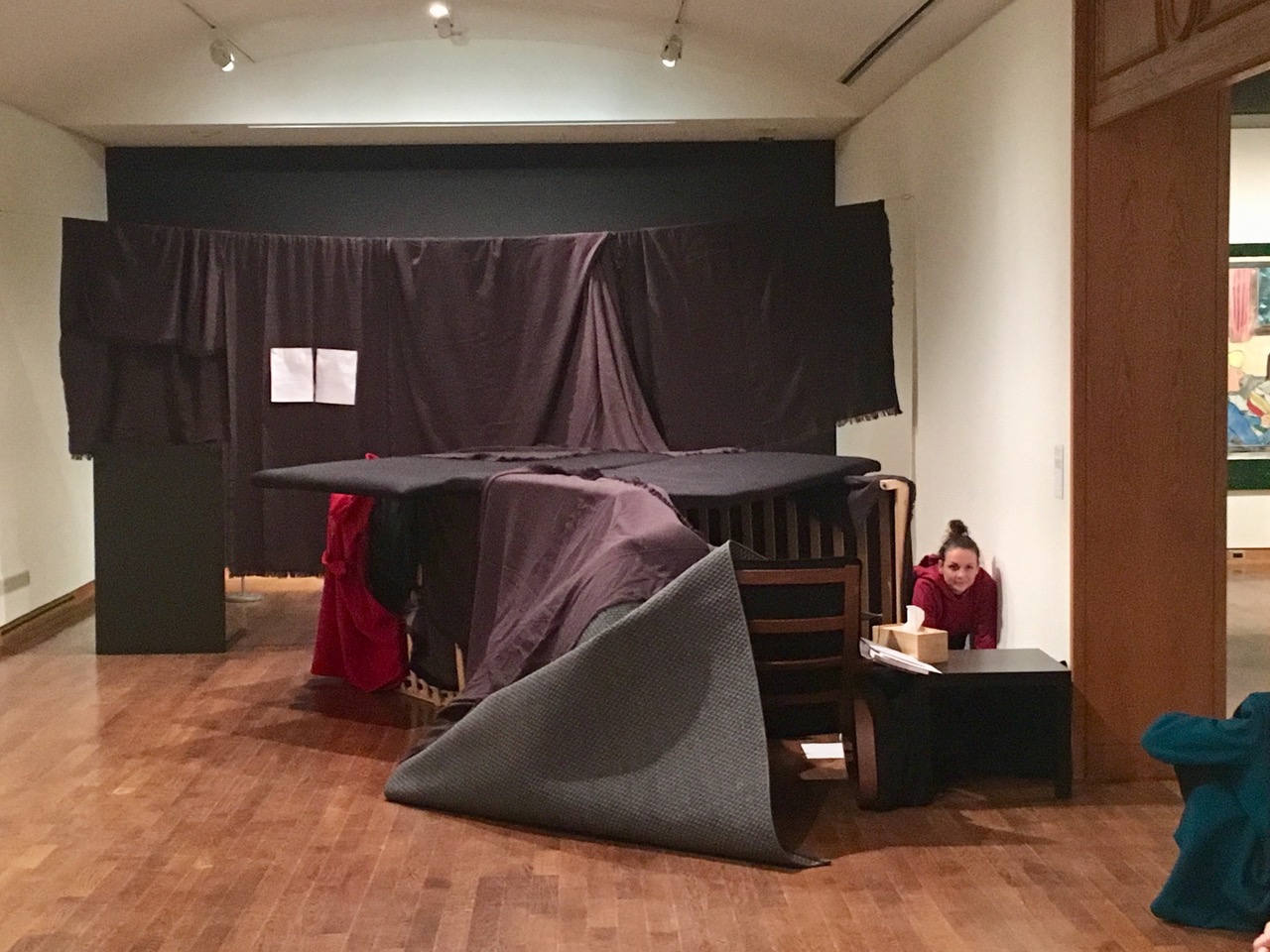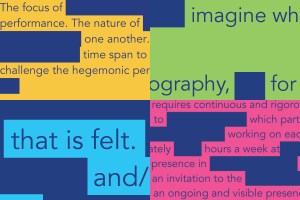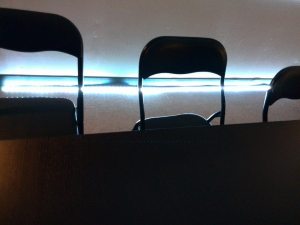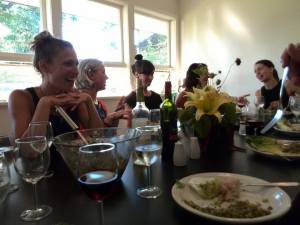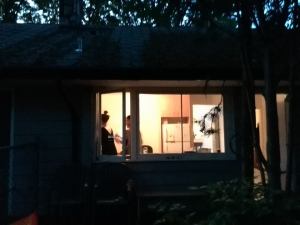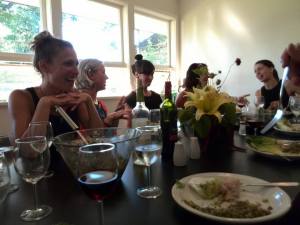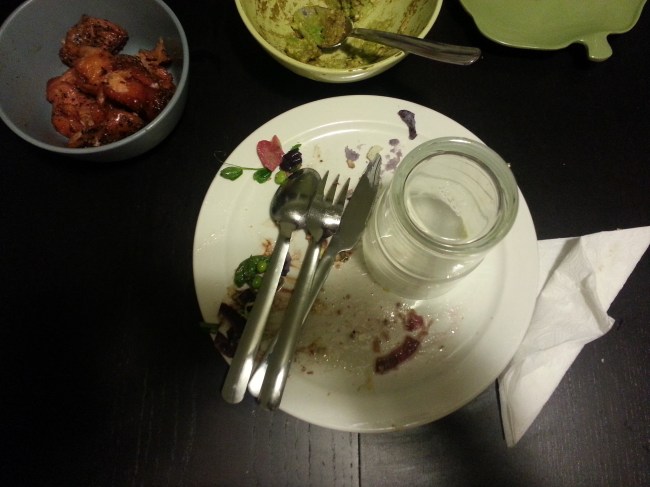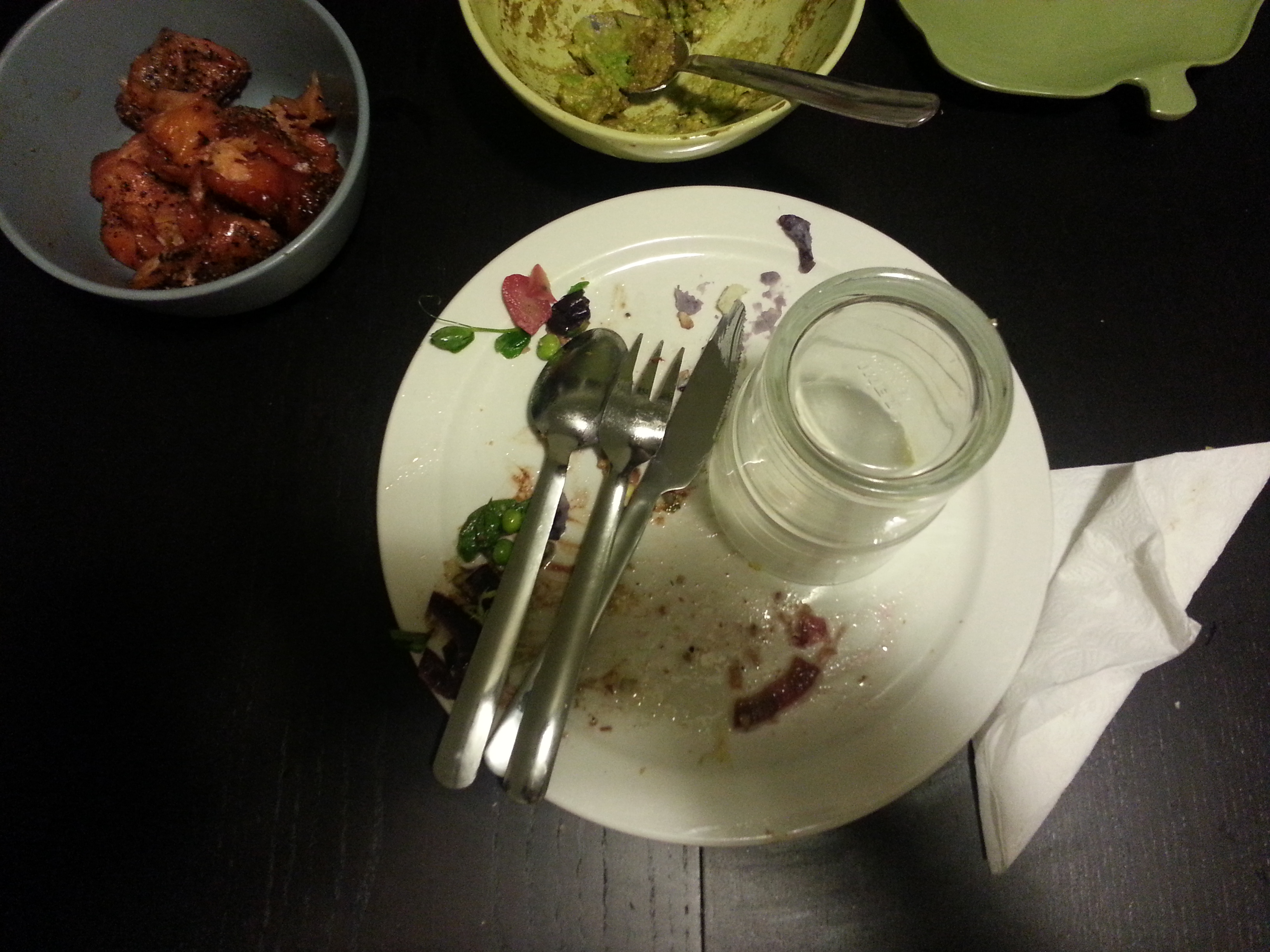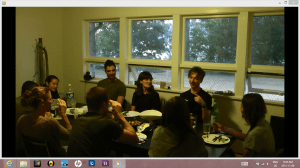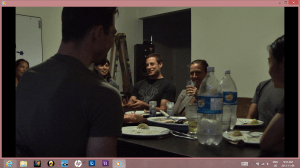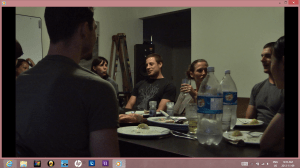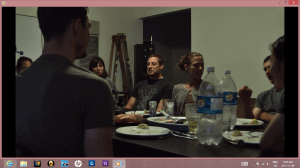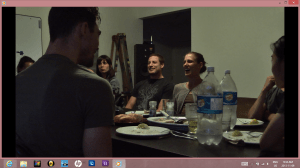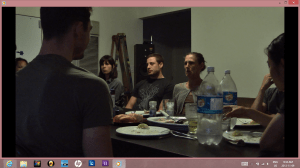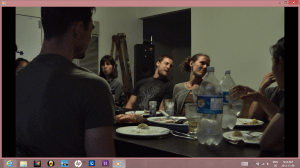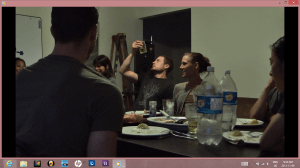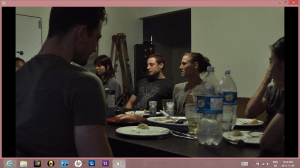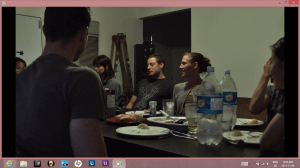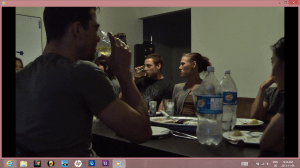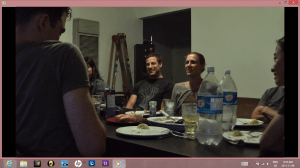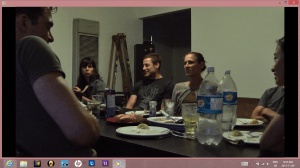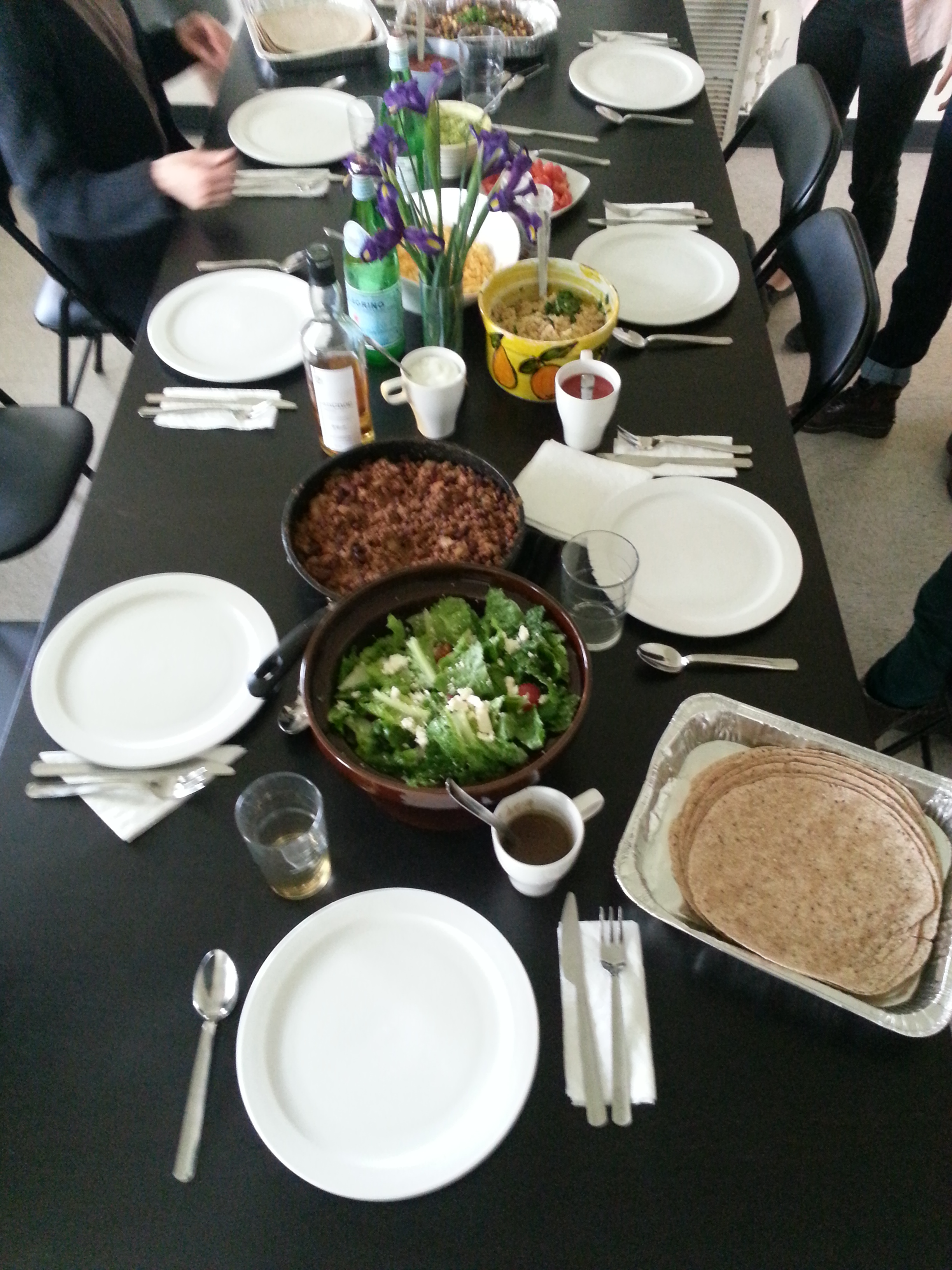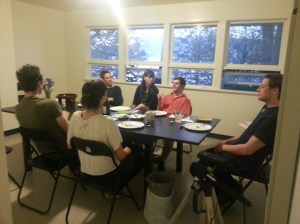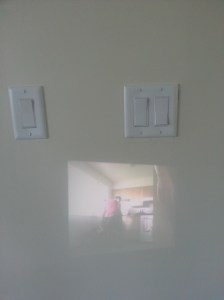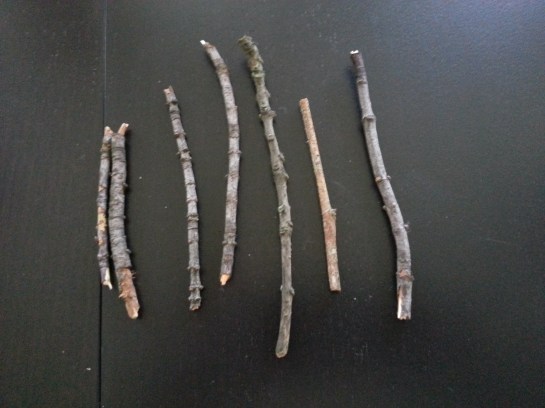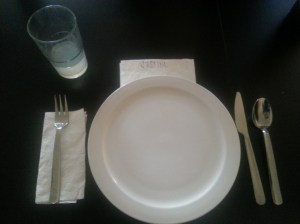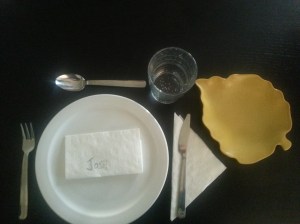Family Dinner
By: Alexa Mardon
Nestled in a cluster of trees on the edge of Kits beach and the cusp of Vanier park, the Hadden Park Field House at 1015 Maple Street is the current resident space of Vancouver artist collective Ten Fifteen Maple: Justine A. Chambers, Josh Hite, Rebecca Bayer, Billy Marchenski, and Kristen Roos. The former caretaker residence is a part of the Vancouver Parks Board’s Field House Residency program, launched in 2012, which provides artists/collectives with free studio space in exchange for community arts-based engagement. The Field House acts as the site for the collective’s often participatory research. As the group’s website explains, “Through sound, collective recordings, temporary installations, performances, screenings, workshops, conversations and dinners, the projects will be dedicated to the very means of engagement that happens between people and their particular surroundings” (tenfifteenmaple.org).
In early June, I’m invited to attend a participatory work by dance artist and Ten Fifteen Maple collective member Justine A. Chambers entitled “Family Dinner.” Family Dinner is described as “an immersive and intimate dining performance [where] guests join a very particular family dinner exploring the choreography of dining, etiquette and behavioural codes. Each dinner is at once a rehearsal, performance, embodied recording and a conversation with dinner guests” (tenfifteenmaple.org). Though the dinner I attended functioned as a dress rehearsal for the work proper, the performances are typically publicly accessible events, with the group accepting bookings for guests via the collective’s website.
On the Tuesday evening I arrived for dinner, the early summer sun had begun to sling low behind dwindling family barbeques. Distant tankers flashed in the light. Once through the chain-link gate and at the door I’m greeted with hugs and warm smiles by what Chambers affectionately calls the “Task Force,” a rotating group of some of Vancouver’s most sought-after dancers and performers; it’s a close group, including many people I’ve learned from, trained with, and admired in the city’s small dance community. It might have been relaxing, a nice moment to catch up with those who’d been out of town or busy, a rare opportunity for so many working artists to be in the same room. But I’d been invited to a performance, and I was suspicious. I immediately started sweating in my ill-chosen long sleeve shirt. In the cramped caretaker’s kitchen, where pasta noodles were sending up steam off the stove and the twelve bodies of guests and performers alike were packed tightly, I gratefully threw back the glass of cold white wine that was placed in my hand as my jacket and bag were whisked away from me.
Justine A. Chambers’ work typically deals with the movement language of gesture, and her attention to detail — the slightest angle of the chin, the initiation of a movement from this finger rather than that — is a signature of her practice. Having both danced in Chambers’ work as a student and seen her work performed by herself and by other interpreters, I am aware of her ability to apply the observation of her own and others’ habitual tendencies and to multiply them; to render them into a tight score and show them back to us. This looped replication, familiar yet grotesque, is often unsettling. It was this keenness of observation that I had in mind as I entered into the machinery of the choreography, the “embodied recording.” My awareness was heightened accordingly throughout the evening.
We were ushered into the “dining room” by the performers: a large table set tastefully for twelve, small windows overlooking the seawall path, the spectacular sunset threatening. Against the wall opposite the window, a smaller table acted as a buffet, our slow-baked tomatoes, pasta, and salad ready to be dished out by the few performers hovering over it. We were subtly arranged so that — as much as possible — each of the six guests sat between two performers. Justine, standing at the head of the table, asked one of the guests, on the side of the table opposite the buffet, to pass her the empty plate to her right. This seemed to be the formal signifier that the performance had begun. The plate made its way towards the serving table, was heaped with food, and was then passed clockwise between hands, all the way around the table, in an absurd display of hospitable excess, past its original position, to the guest on the left of first person who originally picked up the plate. The guests laughed, a little knowingly and nervously, and Justine smiled gracefully at us all. When, finally, the last plate had moved through twelve pairs of hands and is set down, performer Tiffany Tregarthen asked,
“Does anyone want to say grace?”
In the silence that followed, we all observed each other.
“Well, bon appetit!”
Marten Spangberg writes about a type of performance that calls for “a shift towards performance as an activity”, the poesis of the already-there. In an essay titled
Immaterial Performance,” Spangberg asks not what, but when, is the performance? Chambers’ Family Dinner is at once a revelation and an interrogation of the already-there. Rather than a production “without the possibility of essence,” Family Dinner is an experimentation wherein the body acts as imperfect recording device, the playback a magnification, rather than an unfolding of. At Family Dinner, a conversation with a dinner guest is the essence of the everyday, made bizarre by process of distillation.The performance is in fact derived from essence; of habit, of social cues, and the immense histories carried with each of us in our bodies.
Once we were settled; eating and chatting, it became apparent that the performers were adhering to a movement score, or a set of instructions previously “choreographed,” though those instructions took some time to make themselves explicit. The lighting in the room began to shift as well; a wall-mounted reading lamp would flick on or off, while the timbre of the overhead lights would softly change. Conversations darted and buzzed between neighbours and the guests joked and remarked on these changes, making our awareness of the performance known.
Meanwhile, Chambers held court; she was a charming host with perfect comedic timing. Despite this, the room was charged with an energy similar to the uncomfortable and mysterious experience of having a conversation with somebody who keeps checking their watch. I would ask a question, contribute an anecdote, or listen to a story, but my involvement was checked, as if real time were suspended; each person, including the guests, was existing in a mental capacity outside of the room and the conversation itself. In the absence of a watch, the performers checked each other, their plates, Chambers, and, unsettlingly, us. It was hard not to notice the intricate web of signals whizzing across the table. The movement score surfaced in bursts; moments of unison would appear in an elbow on the table, or the perfectly timed thrust of three performers’ torsos backwards into their chairs as they laughed maniacally at another guest’s comment. Trying to carry on a conversation while watching them – and watching them watch each other – was both exhausting and exhilarating. It was akin to being let in on a juicy secret I couldn’t yet grasp the consequence of.
When performer Josh Martin, clearly visible at the head of the table opposite Chambers, began making a series of gestures, crossing his hands over his chest and pointing his fingers out like guns, making fists and then opening them, it was almost a relief. Dance! Movement! Here was something I could latch onto. For a moment, I could relax into watching. Aryo Khakpour and David Raymond joined him, and the three men casually continued on the conversations they’d already begun while completing their movement task.
Spangberg’s idea of immaterial performance describes a shift towards performance as an activity, an occasion in which performer and audience can merge into one entity, not through conventions of participation but through “charged interactions.” While the guests at this dinner were clearly not privy to the exact choreographic tasks at hand, we sat at the same table, interacting with the performers, cumulatively composing the performance “as activity, shared through multiplicities of relations, rather than performance as representation” (Spangberg 2).
After a time it became clear that the performers were lagging in finishing their meals. A perpetually fast eater, I drank the rest of my wine, and then drank my refill. When Tiffany Tregarthen and Alison Denham, both lithe, graceful and articulate women, leaned steeply over their plates in unison and began shoveling the remainder of the food into their mouths, my first instinct was to look away. Instead I watched closely as they both packed away half a plate of food in under ten seconds, smiling and commenting enthusiastically on their meals. Finally, the performers cleared our plates, and the guests were left alone for a moment. We all agreed we were bewildered, enthralled, and a little bit exhausted. Chambers and the performers re-entered with our dessert.
“Now I’m going to tell you what happened,” said Chambers.
Over the last year, and through a series of research and rehearsal periods both including and excluding “guests,” Chambers and the rest of the Task Force created an overarching movement score, which included such gestures as the hand pointing. Outside of the scored, set movement, dictated by both the lighting cues and a timer system on Chambers’ pocketed phone, to which she gave the group set cues, there was another, more complex and embodied score. From each of the now 100 or so guests that have dined with the Task Force, one gesture, habit, or tic is pulled. Together, the performers practice and perfect this guest’s gesture, adding it to the growing library of possible movements. Not only are those movements memorized and performed, they are the only movements allowed. There is a gesture for drinking your wine, as there is one for leaning on the table, as there is one for turning to the person to your right, as there is for wiping your mouth with your napkin. Each of these everyday and utilitarian movements is done as somebody else who has sat around that table. As Chambers explained, the performers are so deeply locked in the bodies of others, this cumulative body, that they are no longer free to perform any of what they might consider their own gestures or movements. After we would leave that evening, the performers would choose a gesture from each of the six of us, and add it to the blueprint for their dinner the following evening.
This relentless perpetuality recalls Delueze and Guattarri’s notion that the network of signs is infinitely circular — that “The statement survives its object, the name survives its owner. Whether it passes into other signs or is kept in reserve for a time, the sign survives both its state of things and its signified; it leaps like an animal or a dead person to regain its place in the chain and invest a new state, a new signified, from which it will in turn extricate itself” (1000 Plateaus, 134). In the structure Chambers has built for an “embodied recording,” the personal is de-personalized, the materials for construction of identity are made open-source, and the singular is made communal. In this sense, Family Dinner is truly participatory at a level that performance working under this banner often fails to reach. The body of performer and guest surge forward into the work’s next iteration, yet the relationship between performer and participant is circular. The cumulative physical blueprint is the performers’ only entryway into interaction; the work exists at the precipice between what has been and what is. This immense potential for slippage both completes and ruptures the work’s self-imposed task of recording, opening it up to the possibility of entry, of charged interaction between performer and participant, between then and now.
While the identity of each participant becomes subsumed, mysterious and anonymous, it’s important to Chambers that the architecture of the evening not remain a mystery. As we sat, taking our time with dessert and chatting, guests and performers alike asked questions and batted around ideas about what we’d all just now been a part of.
At the time I attended the dinner, Chambers had recently gotten word that, along with this season’s Vancouver-based Dancing on the Edge Festival, Family Dinner had been accepted for programming in both Ottawa’s Canada Dance Fest and Montreal’s OfFTA for the 2015 season. The importance of this work being considered “dance” is far-reaching. Chambers recalled an anecdote in which a previous dinner guest had been disappointed in the “lack of dance.” This particular guests’ codified expectations of a dance performance were not met at Family Dinner, and this rift allowed for an important interrogation of the medium’s definition. If you were to ask Justine A. Chambers where the dance is, she would invite you, graciously, to look around.
Choreography/Direction: Justine A. Chambers in collaboration with the performers
Performers (on the night the writer attended): Justine Chambers, Josh Martin, David Raymond, Tiffany Tregarthen, Aryo Khakpour, Alison Denham.
Lighting: James Proudfoot



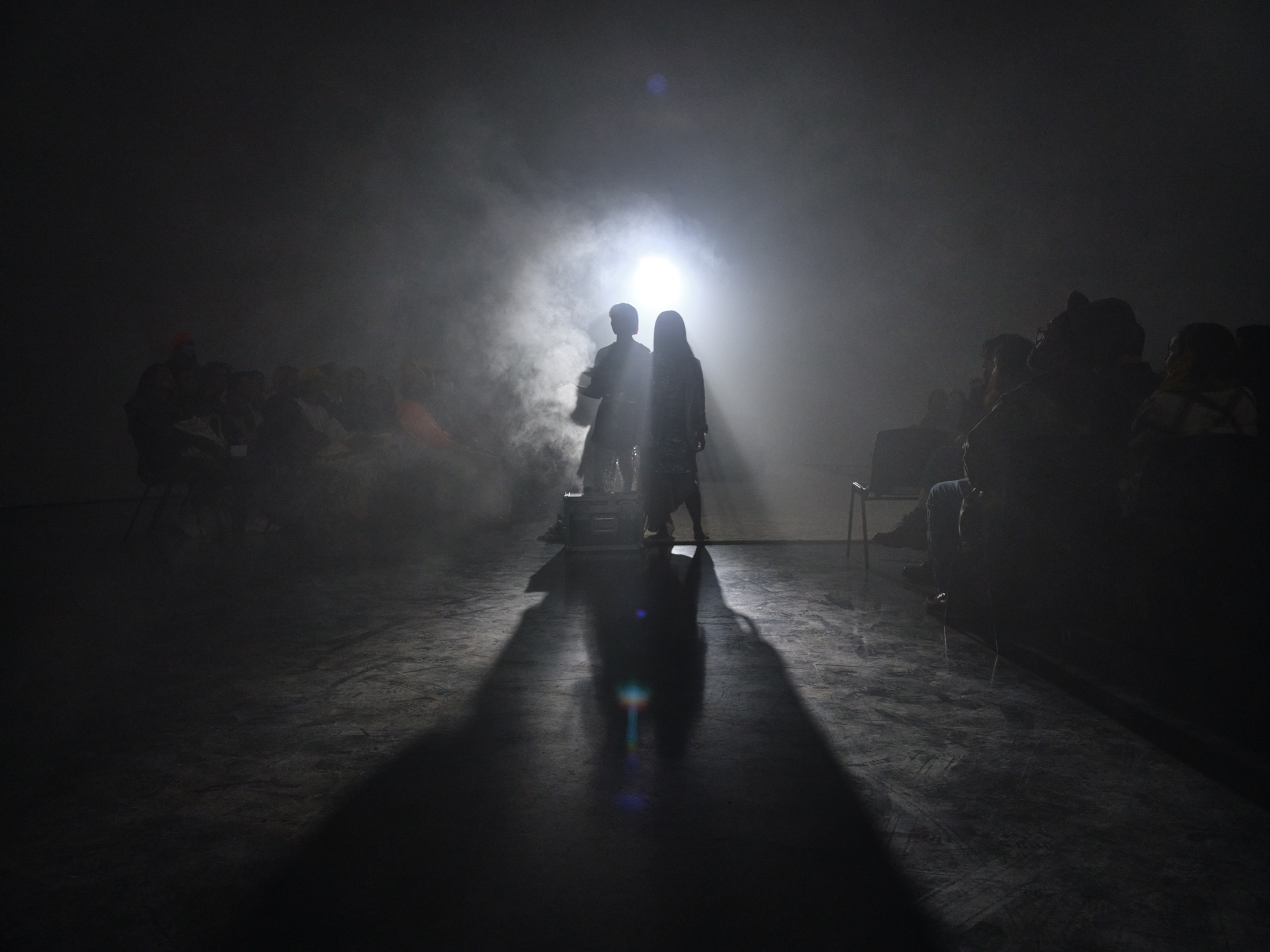





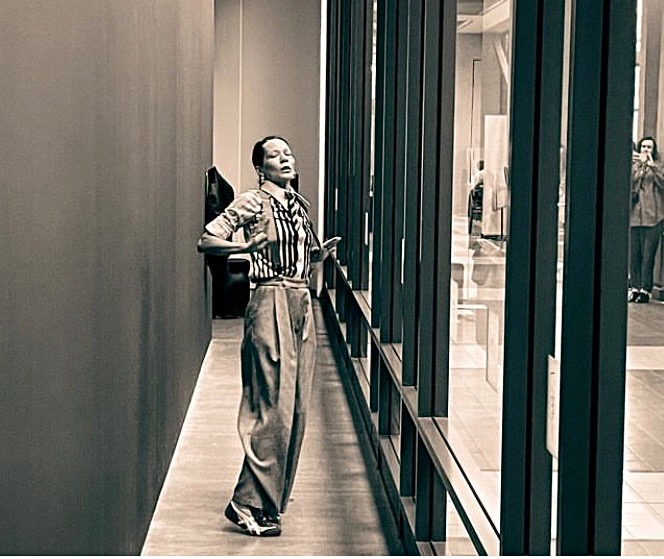



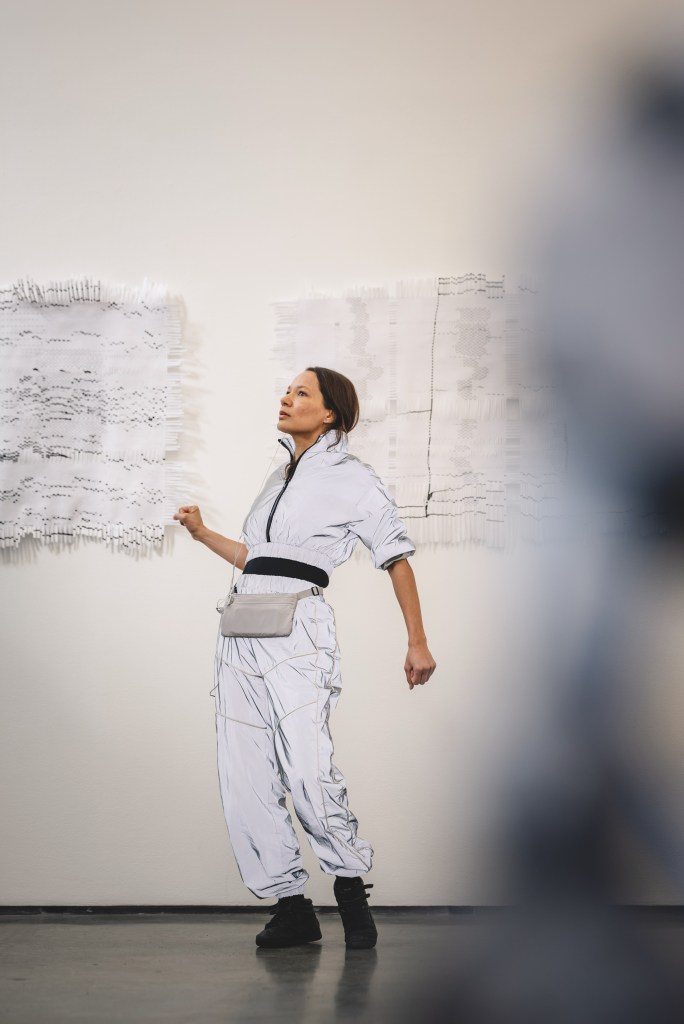



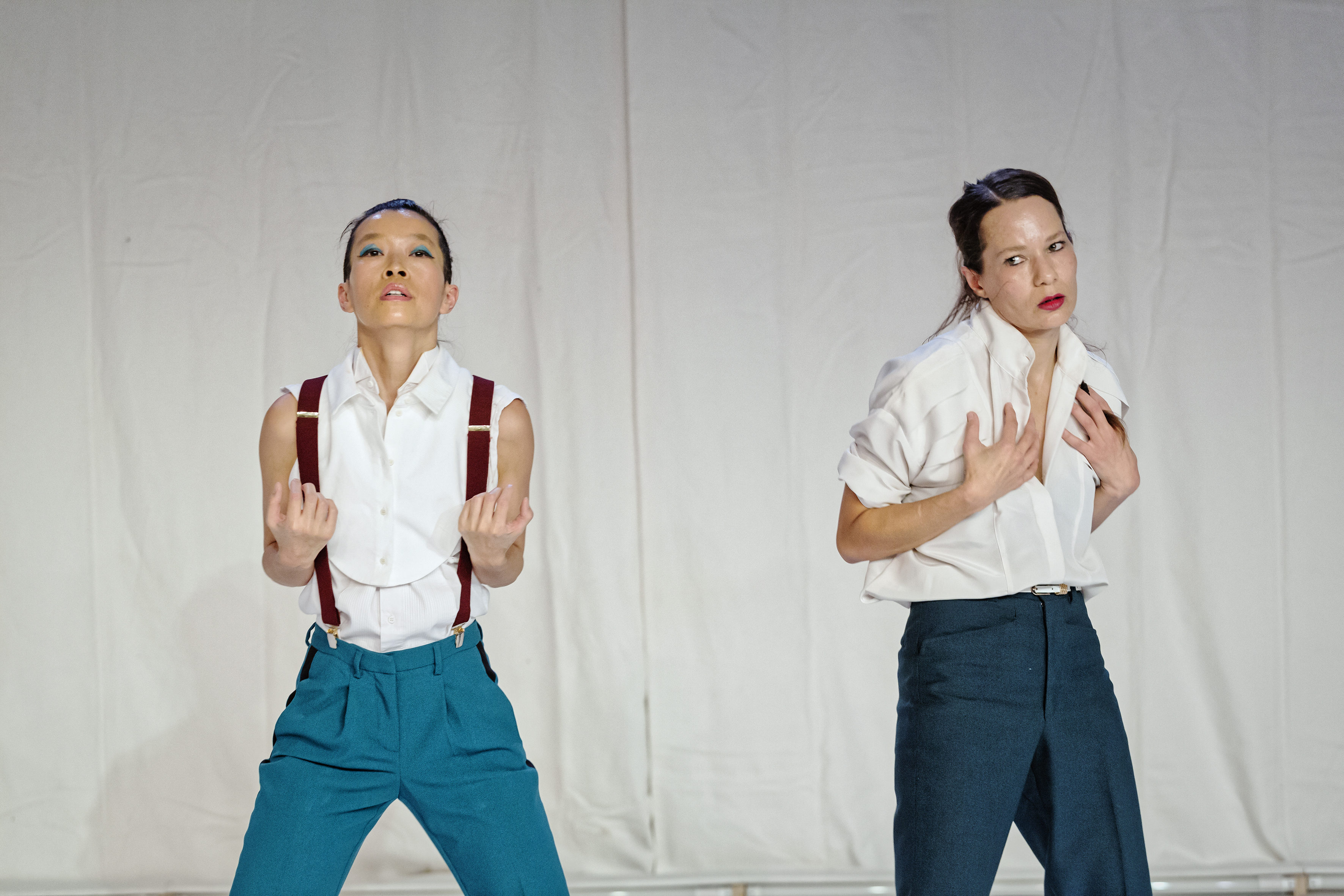
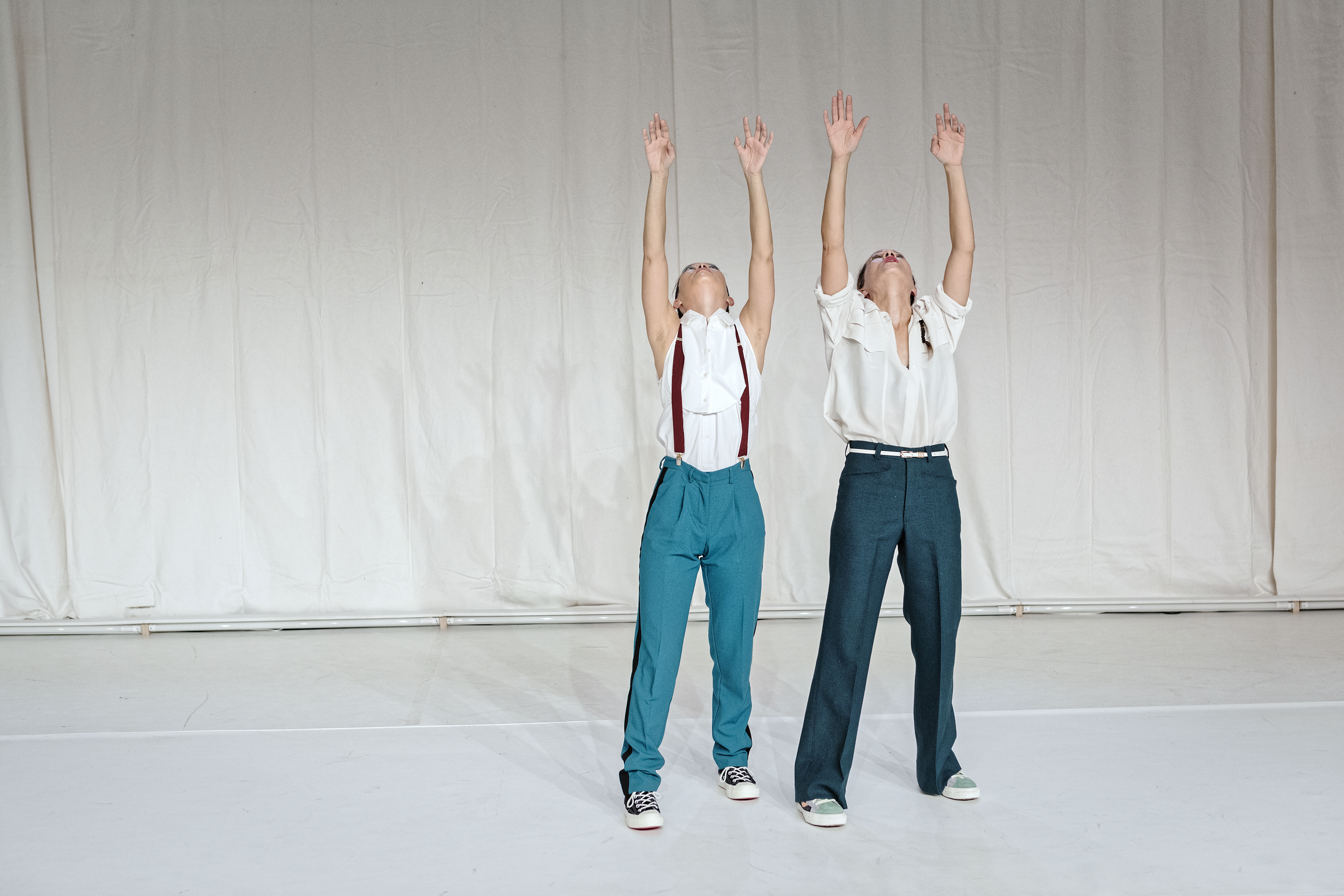 Rooted in friendship and alliance,
Rooted in friendship and alliance, 






